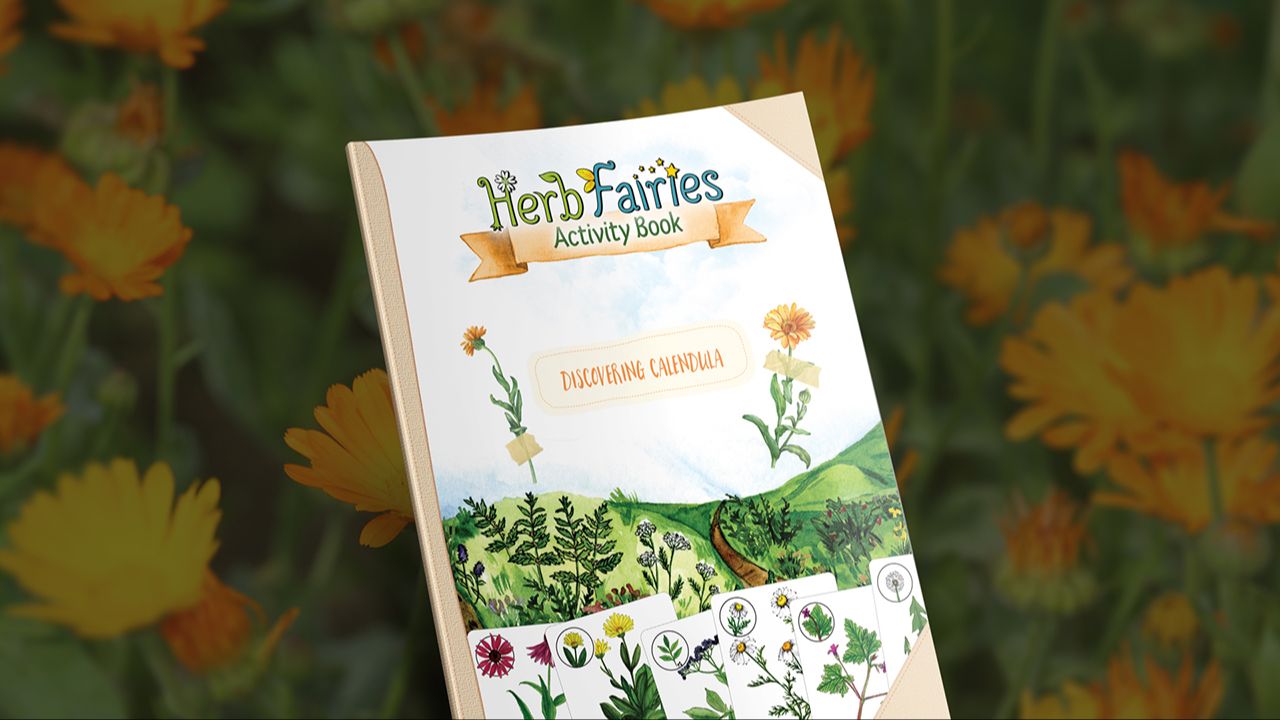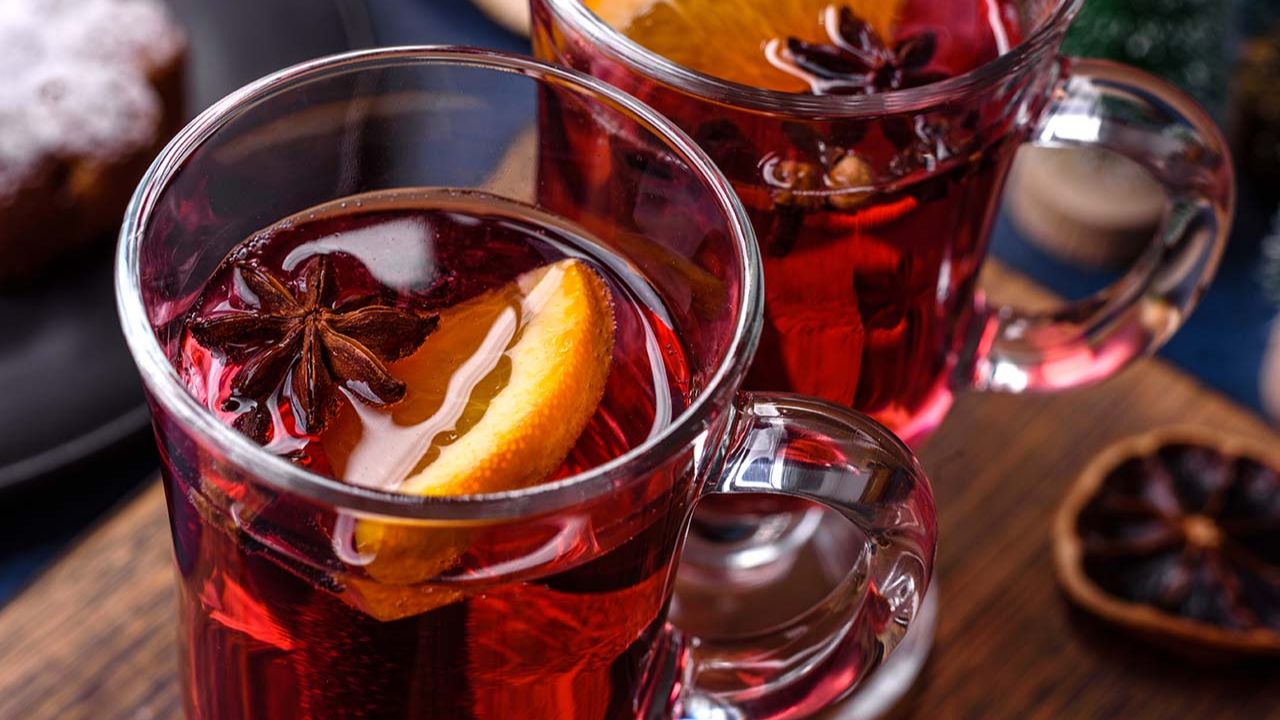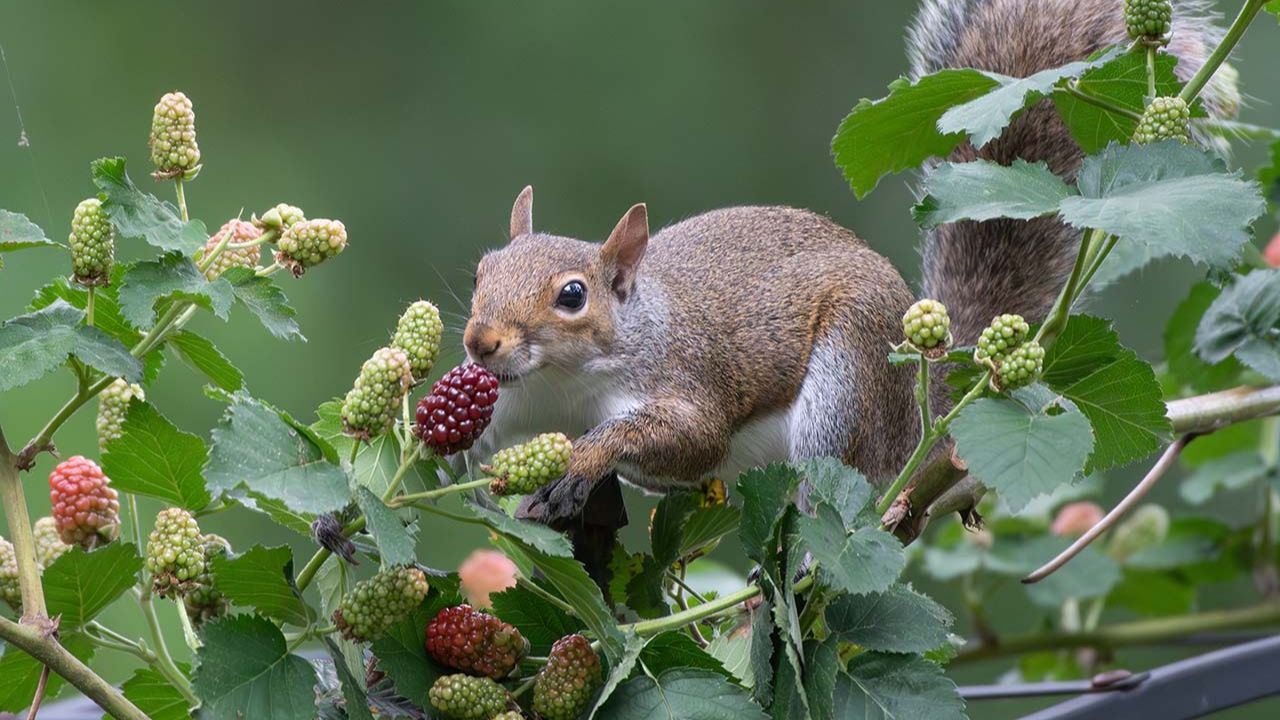
Dill Uses and Plant Monograph
Sweet, soothing, delicious, gentle, protective — these words describe the essence of the lovely dill plant, which is, in my opinion, a vastly underrated herb. Growing up, I was always familiar with this flavorful herb that my mother grew year after year at the edge of our small vegetable garden. Whenever my dad grilled up some salmon, the best part of the meal was always the fresh dill he would pick, chop, and mix with mayonnaise. This simple, fresh herb, dill-y condiment was a childhood staple of mine, and it still continues to be a common garden delicacy in my parents’ home today.
Even though dill took a back seat during my official herbal studies and wasn’t mentioned in any of my classes, I always had dill in the back of my mind and heart as an important part of my life. Only after graduating from herb school did I dive into this herbal childhood treasure, and what I found was an incredibly rich set of uses as well as a deep cultural inheritance, especially from my Jewish Ashkenazi side. In fact, I dove so deeply into dill’s uses and history that I even started to have dreams about dill! Turns out, there’s a lot to this humble and scrumptious garden herb.
Dill Uses and Plant Profile Summary
- Botanical Name: Anethum graveolens
- Other Common Names: Anet, Dill-Oil Plant, Meeting Seed, Dill Weed, Sabbath Day Posy, Shabat/Shibit (Arabic), Eneldo (Spanish), Aneto (Italian), Endro (Portuguese)
- Family: Apiaceae (Carrot Family)
- Parts Used: seed, leaf, flower
- Energetics: warm, dry
- Taste: sweet, pungent, bitter
- Plant Properties: antispasmodic, carminative, diuretic, galactagogue, hypoglycemic, hypolipidemic, stomachic
- Plant Uses: digestive aid, increasing milk production, cholesterol management, diabetes management, osteoarthritis treatment, potential anti-cancer activity
- Plant Preparations: infusion, tincture, oxymel, vinegar, food, infused oil, honey, essential oil, hydrosol
Uncovering the History of Dill
Dill, scientifically known as Anethum graveolens, has a story that stretches across continents and centuries; with its roots in North Africa, Iran, and the Arabian Peninsula, where it evolved. As early as 1500 BC, it was often used by the ancient Egyptians, who listed it in the Ebers Papyrus as a balm for pain and a soothing remedy. Dill’s journey through history is a rich tapestry — in ancient Greece, it was a beloved cure for digestive woes, hiccups, and even wounds. In Greek mythology, there is a brief and incomplete origin story about dill that involves Anethus, a beautiful youth, being transformed into the dill plant.
Ancient Romans and medieval Europeans saw dill as a shield against dark forces, hanging its sprigs in doorways to ward off evil. In the Jewish Talmud, dill is mentioned as a trusted carminative, soothing troubled stomachs with its gentle touch in ancient Israel. As European settlers spread across the Americas, dill journeyed with them, and during the rise of the British Empire, dill oil found its way into gripe water, an Englishman’s concoction that became a beloved remedy for infant colic and indigestion, particularly in India, due to British occupation.
Though today dill may often be overlooked by herbalists in favor of flashier herbs, it remains a quiet yet powerful ally in gardens around the world. May this monograph help you rediscover its soothing, protective nature and bring it back to the center of your herbal and culinary life where it rightfully belongs.

Dill as a Digestive Aid
Dill’s anise-like, slightly minty aroma is a giveaway that this culinary herb isn’t just for flavor: it’s also a functional carminative. Carminatives are herbs that dispel gas, ease cramping, and generally help the digestive system function smoothly — and dill is no exception. Dill is also known to help improve appetite and bad breath, especially by chewing on the seeds.1 When added to salads, stir-fries, condiments, and more, this little green garden herb is a helpful digestive aid at the dinner table.
Although dill can help all people digest their meals better, it traditionally has an affinity for children’s digestive complaints, like infant colic. Infant colic is a common digestive pain and spasming caused by gastrointestinal blockages and other digestive distress, characterized by inconsolable crying, difficulty feeding and sleeping, clenched fists, and an arched back.
One famous colic treatment, originating in England (and mentioned above in the introduction), is gripe water which has been used to treat infant colic all over the world. Dill was the original herbal ingredient in gripe water, although ingredients currently vary depending on the brand. In a Modern Herbal, Maude Grieves writes, “Oil of Dill is used in mixtures, or administered in doses of 5 drops on sugar, but its most common use is in the preparation of Dill Water, which is a common domestic remedy for the flatulence of infants, and is a useful vehicle for children's medicine generally.2 It seems she is referring to gripe water!
Finally, on Herb Mentor, K.P. Khalsa shares that while he uses fennel for digestive upset in adults, he finds that dill works better for children. Dill’s gentle yet effective properties make it a longstanding herbal ally for soothing children's digestive woes, particularly in cases of colic.

Increasing Milk Production
Interestingly, dill’s association with children goes beyond its colic-fighting effects: dill is traditionally known as an herb that helps increase milk production in lactating parents. This type of milk-increasing herb is known as a galactagogue (other common galactagogues include fenugreek and fennel). A new parent may turn to herbal galactagogues when their milk isn’t coming in at a high enough volume. In Ayurvedic medicine, dill is known as a galactagogue, both for humans and cattle, and it has been given to cattle for this purpose.3
There are no clinical trials with dill that demonstrate its galactagogue abilities, but if you’re in need, I would still try dill as a galactagogue, mixed with fennel and fenugreek.4 You can start with a 1:1:1 ratio of dill seed, fennel seed, and fenugreek seed. Add ¼–½ cup of this herbal mixture to 1 quart of water, decoct covered for 15–20 mins, strain, and drink throughout the day. Feel free to adjust the herbal ratios as desired once you get a feel for this formula.
A sweet side benefit of a lactating parent taking dill is that the carminative benefits can be passed directly into their baby’s digestive system through milk. While the dill preparations I’m suggesting are made with whole dill rather than essential oil, I was intrigued and unsurprised to find a study showing that a small but measurable quantity of dill essential oil, specifically the constituent d-carvone, is passed through breast milk, which may help relieve colic.5 By ingesting fresh dill (which has low/gentle doses of dill’s volatile oil constituents), you can potentially increase milk flow with this herb’s galactagogue effects, while relieving infant colic with its carminative effects all at once!

Cholesterol and Diabetes Management
Dill has been studied as a part of cholesterol and diabetes treatment, and the results are promising! A systematic review of randomized controlled trials focusing on the effects of dill on cholesterol and triglyceride levels revealed that a variety of dill preparations can significantly lower total cholesterol, LDL, and triglycerides. Dill decreased LDL more effectively for people that were hyperlipidemic and people with Type 2 Diabetes. Dill also decreased triglycerides more effectively for people who had Type 2 Diabetes.6 In another systematic review of dill’s effects on cholesterol, etc., there were similar results but additionally serum insulin and fasting blood glucose were measured. The results showed that dill supplementation significantly lowers serum insulin levels and fasting blood glucose.7
These results are exciting: they mean that dill can help lower LDL cholesterol, which is the type of cholesterol that is generally more damaging to blood vessels. Dill can also lower triglycerides, which is another positive effect for the cardiovascular system. In addition to these benefits, decreasing insulin serum levels and fasting blood glucose is an indicator that dill may help balance blood sugar and be a great addition to a diet focused on decreasing insulin resistance. Overall, dill may be a great herb to take for long term chronic health issues like insulin-resistance, cardiovascular health challenges, and more.

Osteoarthritis Treatment
I never considered dill as a remedy for arthritis and osteoporosis, but one study points to promising treatment results! This study found that a water extract of dill seed helped suppress osteoclast activity.8 Osteoclasts are cells that break down bone, and while they are essential for bone remodeling, in arthritis and osteoporosis cases it is often beneficial to slow down their activity to prevent even more bone loss. Thus, dill seed slowing down osteoclast activity could be a helpful part of a holistic treatment for arthritis/osteoporosis.
The same study also found that for bone health dill seed helped reduce bone loss and weight gain associated with ovariectomy, which suggests that dill may have a regulatory effect on some hormonal pathways.9 Perhaps dill would be a great herb to suggest for menopausal changes, given this research. However, although it seems promising, since these results are only from one study, I personally would use other herbs that have more evidence backing their use in menopause/bone density treatments.

Potential Anti-Cancer Activity
Dill essential oil (and an ethyl acetate fraction of dill seed) were shown to induce apoptosis, also known as cell death, in cancer cells.10,11 However, these studies were done with cells in petri dishes, and not in human clinical trials. Therefore, while I find these results promising, I don’t put too much weight on them as human clinical trials are necessary for determining if dill is a viable component of cancer treatment. Nonetheless, the results are exciting and hopefully more research will be done on dill’s effect on cancer cells.

Dill in the Jewish Tradition
Dill is a beloved food in many traditions across the world, but as a Jewish herbalist, I focus on the history of dill in my Eastern European Ashkenazi Jewish lineage.
Dill is a classic Jewish herb, and for Ashkenazi jews (and to a lesser degree Sephardic Jews), dill was widely available and often incorporated as an important ingredient into many foods from dill pickles to Passover charoset to gefilte fish. Dill is a beloved staple in my Jewish family, and I’m excited to share one of my favorite dill recipes that my grandmother still makes every year during family reunions. Pro herbalist tip: I always triple the amount of garlic and dill!

Matzo Ball Soup with Dill
Ingredients
For the Matzo Balls:
- 1 cup matzo meal (about 150 g)
- 4 large eggs
- 4 tablespoons schmaltz (rendered chicken fat) or vegetable oil
- ¼ cup seltzer water (60 ml)
- 1 teaspoon salt
- 1 teaspoon ground black pepper
- 2 tablespoons fresh dill, finely chopped
For the Soup:
- 1 whole chicken (about 1.5-2 kg), cleaned
- 2 large carrots, peeled and cut into chunks
- 2 celery stalks, cut into chunks
- 1 large onion, halved
- 1 parsnip, peeled and cut into chunks (optional)
- 2 cloves garlic, peeled
- Fresh dill sprigs (about 15-20 g), tied with string
- Salt and pepper, to taste
- Water to cover the chicken
Instructions
Make the Chicken Soup
- Prepare the Broth: Place the whole chicken in a large pot. Add enough water to cover the chicken completely.
- Add Vegetables: Add the carrots, celery, onion, parsnip (if using), garlic, and dill sprigs tied with string.
- Simmer: Bring the mixture to a boil, then reduce the heat to a gentle simmer. Cook for 1.5 to 2 hours, skimming any foam that rises to the surface.
- Season: After simmering, remove the chicken from the pot and set it aside. Season the broth with salt and pepper to taste. Discard the dill sprigs and onions. Keep the soup warm.
Prepare the Matzo Balls
- Mix the Ingredients: In a large mixing bowl, whisk together the eggs and schmaltz (or oil) until well combined. Add the matzo meal, seltzer water, salt, pepper, and finely chopped dill. Stir until evenly mixed.
- Chill: Cover the mixture and refrigerate for at least 30 minutes to allow it to firm up.
- Form the Balls: Wet your hands and shape the chilled mixture into small balls, about the size of a golf ball (3–4 cm in diameter).
- Cook the Matzo Balls: Bring a large pot of salted water to a boil. Gently drop the matzo balls into the water, then reduce the heat to a simmer. Cover and cook for 25–30 minutes, until the matzo balls are fully cooked and float to the top. Remove with a slotted spoon and set aside.
Assemble and Serve
- Finish the Soup: Shred the reserved chicken meat and add it back into the soup, if desired. Stir in additional fresh dill for garnish and flavor.
- Serve: Ladle the chicken soup into bowls, add a few matzo balls to each bowl, and top with extra fresh dill for garnish. Serve hot.
Notes:
- The addition of seltzer water to the matzo balls makes them light and fluffy, while the fresh dill imparts a distinct Ashkenazi flavor.
- If you want to keep it vegetarian, the matzo balls can be served in a simple vegetable broth instead of chicken soup.

What’s in a Name?
Antheum comes from the ancient Greek name for “dill”, ἄνηθον (ánēthon). The term was used by the Greeks and later by the Romans to describe the dill plant. This name likely gave rise to the name for anise.
Graveolens is Latin and comes from gravis, heavy or weighty, and oleo, meaning “producing a strong odor.” Thus, graveolens means “emitting a strong or heavy odor.”
My favorite fact about dill’s etymology is that the common name “dill” may originate from the Norse word dilla, which means “to lull or soothe,” or from the German dolde, which means umbel, referring to dill’s inflorescence type.

Botanically Speaking
Dill is part of the Apiaceae or carrot plant family, a large family characterized by many aromatic medicinals, poisonous plants, and umbel inflorescences. Given that there are many poisonous plants in this family, if you are harvesting dill, it’s always important to make sure you’ve properly identified it — chances are, if you’re harvesting it, you planted it yourself, which is a good indicator that you have the right plant! ’ Dill is an annual, meaning that dill germinates, flowers, goes to seed, and dies in one growing season.
Dill has a 7-12 in long taproot somewhat resembling a carrot, and the plant usually grows 1.5–5 feet high. Its grooved green stems sometimes have a slightly blue-ish tint and are hollow, while its leaves are alternately arranged and finely divided into bright to blueish green soft, thin, and delicate threads. Its feathery leaves grow up to 6 in long, and the divided leaf threads are 1–2mm wide.
You may see the leaves described as bipinnate, tripinnate, filiform, which are all terms referring to the leaves’ extensive divisions into threads. Flowers are white to yellow, small, and arranged in umbels 1–3.5 in. in diameter, arising from one long stalk. Seeds are 4–5 mm long and 1 mm thick, straight to slightly curved with a ridged surface (much like other Apiaceae family seeds). Dill grows best in full sun and needs moderate watering.

Plant Preparations and Dosage Suggestions
- Dill Leaf Infusions: For infusions, I usually dose dill leaves at 1 tablespoon of freshly chopped herb/cup of water.
- Dill Seed Decoctions: When I decoct the seed, I use 1 teaspoon of dill seed per 1 cup of water.
- Dill Tinctures: For this dill extract, 3–5 mL 4x/day 1:2 60% EtOH fresh is my typical starting dose, though I am often blending dill tincture with other herbs.
- Culinary Preparations: My favorite way to “dose” dill is by including a large handful of freshly chopped dill leaves in my stir-fries, salads, salad dressings, potato salad, soups, and stews. These culinary preparations are a tasty way to experience the healing constituents of dill.
Special Considerations
Dill is generally recognized as safe (GRAS) by the FDA, meaning it is safe for consumption. Some skin rash issues have been reported with handling fresh dill herb, but it is uncommon.
- Pregnancy: It is safe to eat dill in culinary quantities during pregnancy, but do not take dill in therapeutic doses while pregnant.
- Lactation: Dill is considered safe in culinary and therapeutic quantities during lactation.12









